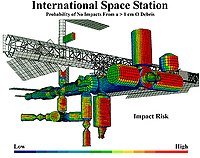
Photo from wikipedia
Background and Objectives: Risk management is considered an integral part of laboratory medicine to assure laboratory quality and patient safety. However, the concept of risk management is philosophical, so actually… Click to show full abstract
Background and Objectives: Risk management is considered an integral part of laboratory medicine to assure laboratory quality and patient safety. However, the concept of risk management is philosophical, so actually performing risk management in a clinical laboratory can be challenging. Therefore, we would like to develop a sustainable, practical system for continuous total laboratory risk management. Materials and Methods: This study was composed of two phases: the development phase in 2019 and the application phase in 2020. A concept flow diagram for the computerized risk registry and management tool (RRMT) was designed using the failure mode and effects analysis (FMEA) and the failure reporting, analysis, and corrective action system (FRACAS) methods. The failure stage was divided into six according to the testing sequence. We applied laboratory errors to this system over one year in 2020. The risk priority number (RPN) score was calculated by multiplying the severity of the failure mode, frequency (or probability) of occurrence, and detection difficulty. Results: 103 cases were reported to RRMT during one year. Among them, 32 cases (31.1%) were summarized using the FMEA method, and the remaining 71 cases (68.9%) were evaluated using the FRACAS method. There was no failure in the patient registration phase. Chemistry units accounted for the highest proportion of failure with 18 cases (17.5%), while urine test units accounted for the lowest portion of failure with two cases (1.9%). Conclusion: We developed and applied a practical computerized risk-management tool based on FMEA and FRACAS methods for the entire testing process. RRMT was useful to detect, evaluate, and report failures. This system might be a great example of a risk management system optimized for clinical laboratories.
Journal Title: Medicina
Year Published: 2021
Link to full text (if available)
Share on Social Media: Sign Up to like & get
recommendations!